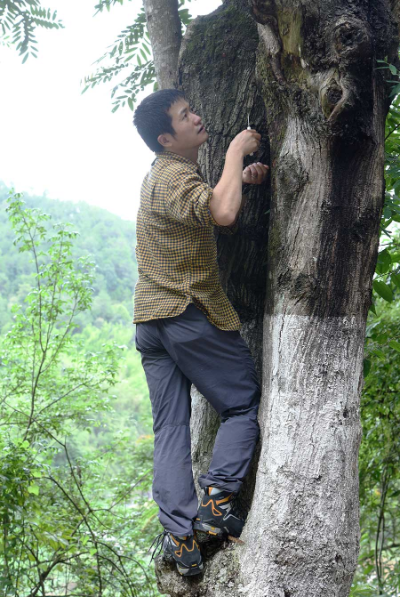 |
|
Ma Wenzhang, a botanist from Herbarium of Kunming Institute of Botany, Chinese Academy of Sciences, collects mosses from a tree in Mojiang county, Yunnan province. [Photo by Ma Wenzhang/China Daily] |
After collecting the moss, Ma puts them into bags made of strong smooth wrapping paper and he needs to dry them on the same day. "It's an easier job compared to other botanists, as they have to prepare their specimens at our field headquarters, whereas I can wait to do that work when I return to the lab," Ma says.
Ma says the lab work actually takes seven times longer than that of the field trip. The identification of the specimen is important work for Ma. He sometimes sends the specimen to specialists all over the world to ask for their insight.
"It's one way to learn about the process of identifying," he says.
To observe the mosses under a microscope is also where Ma finds the true beauty of his specimens. "It's interesting to see the regular cellular structure of the mosses," Ma says.
Zhang Li, director of bryophytes professional committee of the Botanical Society of China, has been studying moss for three decades. Even though the subject is still a niche field, he has witnessed the slow, but sure, domestic expansion of moss lovers.
"There were fewer than 20 specialists studying bryophytes in China 30 years ago. Now, including students, we have around 100 people focusing on this niche subject," Zhang says.
He has known Ma for a decade and has accompanied Ma on field trips a couple of times.
"Ma can bear hardship. He spends a lot of time in the field, especially some places deep in the mountains, to collect samples," Zhang says. "He has the sharp eyes to find moss in the forest at a glance."